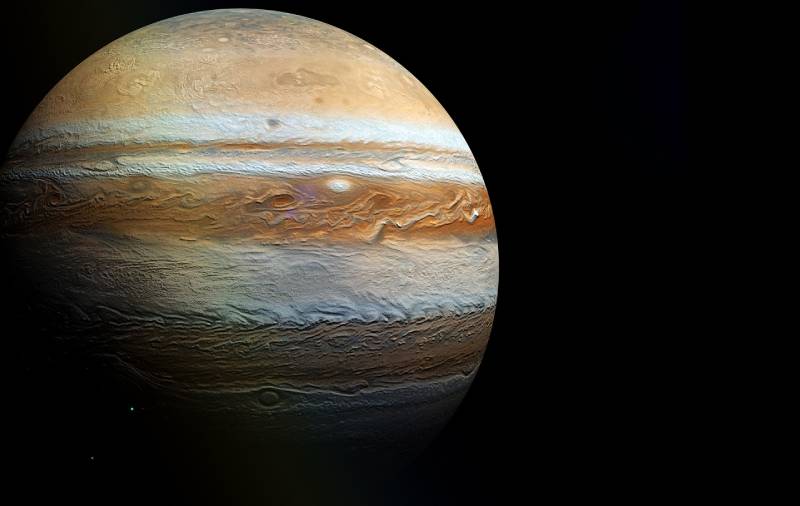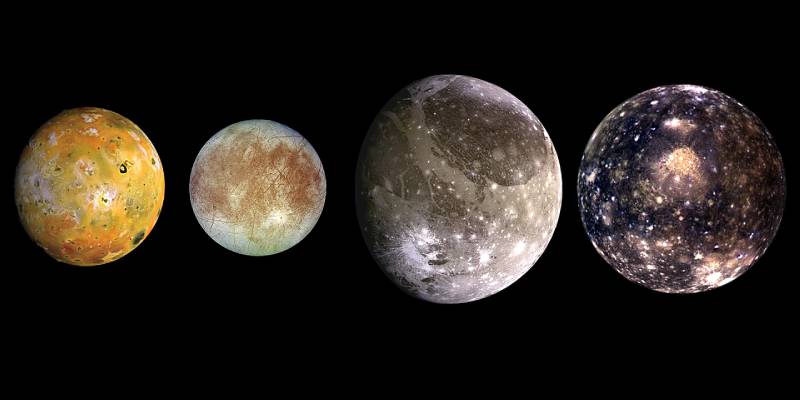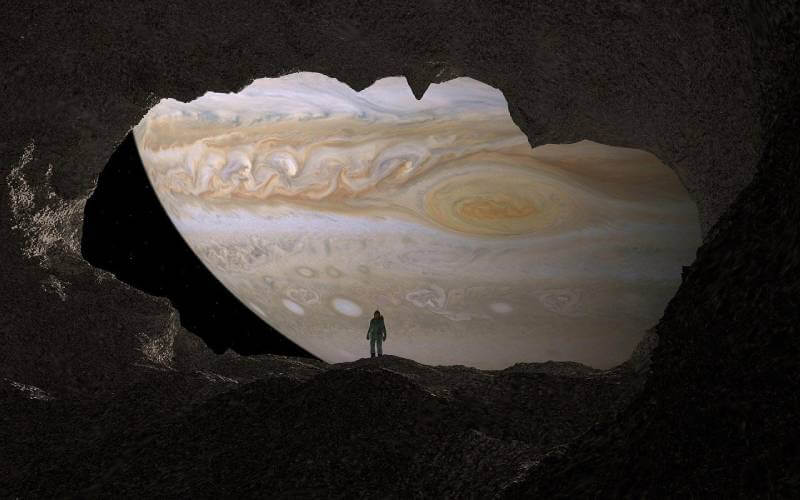The question of human landings on celestial bodies, including moons, stars, and even planets like Jupiter, has intrigued scientists. However, with the aid of modern technology, it has become evident that landing on Jupiter is not feasible.
People want to know if landing on different planets will ever become a possibility. Questions such as, Can you walk on Jupiter? Can you stand on Jupiter? Can humans live on Jupiter? And the resounding answer to all of these questions is absolutely not.
Understanding Jupiter’s Composition and Atmosphere
Jupiter is mostly comprised of hydrogen and helium. The layers of gas mean that there are no solid surfaces that provide a platform for solar landings. Jupiter is one giant gas planet and therefore doesn’t have a solid surface for any type of spacecraft to land safely on the planet’s surface, because there is no surface.
It would be absolutely impossible to land on something that doesn’t even have a solid surface. Where would the spacecraft anchor itself? It is just not doable.
The Strength of Gravity
Not only is there absolutely nowhere that a spacecraft can land on Jupiter, but its gravitational pull would make it too hostile of an environment for anything to function. Jupiter is by far the largest planet and has an extremely powerful gravitation pull on nearby objects, which is why it has the most moons.
The force of Jupiter is over two and a half times stronger than Earth’s gravity. This poses quite a difficult hurdle if we ever wanted to get nearer to Jupiter’s atmosphere and this also makes it nearly impossible for a safe landing.
Immense Atmospheric Pressure
Jupiter also has a very inhospitable atmosphere due to its immense pressure. Due to the massive size and the gravity pull, it results in a very dense and compressed atmosphere. Jupiter’s pressure is about 5-10 times greater than Earth’s atmospheric pressure at sea level. Essentially, it would crush any lifeform that enters the atmosphere.
Even spacecrafts that plan on simply orbiting the massive giant ball of gas need to be prepared to withstand the pressure that is greater than any pressure we have experienced on Earth. Due to its atmosphere and surface conditions, it possesses incredible challenges for exploration and an impossibility for human landing.
Jupiter’s Hostile Environment
Along with Jupiter’s inhospitable atmosphere comes Jupiter’s hostile environment. Jupiter is not only famous for its massive size but also its iconic giant red dot. The giant red dot is a continuous storm. The red dot storm isn’t the only storm continuously occurring on Jupiter.

There are many storms that are constantly developing:
● White Ovals: The oval-shaped storms have white appearances and they can last for several years and can even interact with other storms. White oval storms change shapes and intensity as time goes by.
● Brown Barges: These storms are large, dark, and long-lived storms. Brown Barges are found in Jupiter’s southern hemisphere and are colored brown.
● North North Temperate Zone & South South Temperate Belt: These are regions that have complex cloud structures.
● South Tropical Disturbances: These storms are small but can change in size and intensity.
Storms on Jupiter are constant and unforgiving!
Fast Rotation & High Speeds
Jupiter moves extremely quickly! While it takes Earth to rotate in 24 hours, the large gas giant makes an entire rotation in just 10 hours! With extreme speed, there are continuously high-speed winds. Depending on the location on Jupiter, you can experience winds that are up to 400 mph.
For reference, the strongest tornadoes we experience here on Earth will reach to about 318 mph. Essentially, you would be trying to survive in a tornado!
Unforgiving Temperature
The top of the clouds are freezing cold and measures about -229 degrees Fahrenheit. However, as you descend closer to the core of Jupiter it because extremely hot. The core of Jupiter is estimated to be about 55,000 degrees Fahrenheit.
Probing Jupiter: Robotic Missions
Scientists have tried to learn as much as they can about the monstrosity. They have sent several probing robotic missions to learn more about the chemical makeup, atmosphere, and weather of the gas giant.
There are 6 probing missions that have taken place to help solve some of our questions and make more discoveries:
● Pioneer 10 and Pioneer 11 (1973-1974)
● Voyager 1 and Voyager 2 (1979)
● Galileo (1989-2023)
● Cassini-Huygens (2000-2001)
● New Horizons (2007)
● Juno (2011-present)
Every mission brought back more answers but also created more questions. We have learned so much from the missions and we plan on learning more about the unique planet. Some of the discoveries included possible oceans on Jupiter’s moons and even volcanic activity on a moon.
No Hope for Jupiter, But What About the Moons?
Although Jupiter has proven to be uninhabitable, its moons are showing promise of not only allowing for a potential spacecraft landing but maybe even supporting life!
Scientists are very interested in finding celestial bodies that can possibly support life! The team as NASA and Space X are working together to start colonizing the moon and figuring out ways to set up infrastructure. Once that is successful they want to move their attention to Mars.
We want to know what else is out there and we want to push our technology to the limits Researchers are desperately trying to find other life forms out there whether plants, animals, or even humans.
The moons that have caught the most interest:
● Europa
● Ganymede
● Castillo

All three of the moons have attracted scientists because of their subsurface oceans. Underneath the layer of ice is liquid water! Evidence of water likely has the potential of a habitual environment. It proves that there is water on other entities, not just Earth.
Since the moons are also of a solid surface, researchers are debating whether or not a landing is a viable possibility – only time will tell. So far, scientists have only conducted flyby missions and have not attempted to make an official landing.
Conclusion: Landing on Jupiter is Just Not Feasible
Jupiter is a very unique planet with extreme temperature, lack of solid surface, intense gravitational pull, and impressive weather patterns. Due to all of its characteristics, it makes it inhospitable and impossible to land on the planet using the technology that we have available to us today.
Scientists will continue to get as close to Jupiter as they can to be able to make further discoveries but landing a spacecraft on the surface will not be happening anytime soon.

